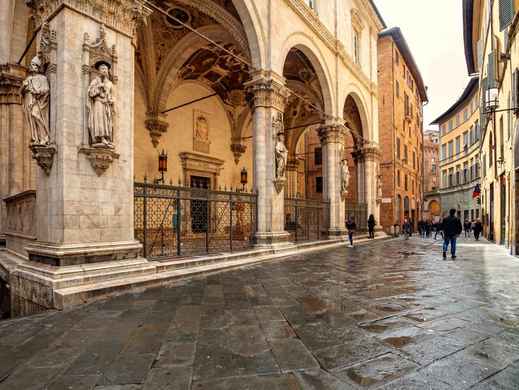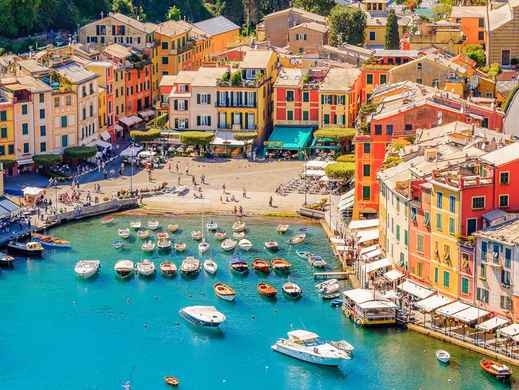


Province of Livorno
Europe
/
Italy
/
Province of Livorno
Nestled along the stunning Tuscan coast, Livorno is a destination you can’t miss when visiting Italy. This Little Venice is often overshadowed by its more famous neighbours like Florence and Pisa, but this city offers a vibrant blend of history, culture, and seaside charm. Let’s explore things you should know before going to Livorno!

Travel Tips for Province of Livorno
What you need to know before traveling here
Getting Around Province of Livorno
A guide to Province of Livorno's local transportation
Walking is the best means of transport in the city centre. The city is pretty compact and walkable, and you can soak up the atmosphere. Cycling is alright, too. Livorno is pretty flat, and cycling lets you park closer to historical places than motor vehicles.
Practical Tips for Province of Livorno
Things to prepare and best way to visit
Livorno is a coastal city in Italy with a classic Mediterranean climate. Summers are generally warm and dry, while winters are mild and a bit wet. In summer, temperatures range from 25 to 30℃, especially in July and August. Winter’s a different story. It’s not freezing, mind you. Daytime temperatures range between 10 to 15℃, so you might need a jacket, but it’s hardly Arctic conditions. It does get rainy, though, with November and December being the soggiest months.
Terrazza Mascagni It’s a massive checkerboard terrace right by the sea. It offers cracking views of Mediterranean sunsets and bustling bars and restaurants. While you’re there, try some of their signature Cacciucco. Fortezza Vecchia This one literally means “old fortress” and is worth visiting at least once. It was built in the 16th century at the entrance of the old port of Livorno. Around this fortress, the port grew strong and modern. Now, you can climb up for some fab views of the port, too. Museo Civico Giovanni Fattori For culture vultures, Museo Civico Giovanni Fattori must be on your list. It is dedicated to Giovanni Fattori’s art, a key figure in the Macchiaioli movement. The museum is housed in the 19th-century Villa Mimbelli and features work by other notable artists. Sanctuary of Montenero If you fancy a bit of nature, you’d love this significant religious site. It’s up on a hill with stunning views over the city and sea. You can stretch your leg and hike up there or take the funicular railway if you’re not up.
Cacciucco This king of Livorno cuisine represents the city’s diverse culinary traditions. Cacciucco is a fish soup with seafood and shellfish cooked in tomato sauce. Triglie alla Livornese Taste one of the local favourites: whole red mullet! This one is cooked Livorno-style, usually in a tomato sauce with garlic and herbs. It's a lovely bit of fish that people usually make at Easter time. Torta di Ceci Torta di Ceci is a snack and one of Livorno’s street foods. It’s a thin pancake-like flatbread with a crispy exterior and soft, creamy inside. It’s made of chickpea flour, so it’s considered good for your diet. Ponce alla Livornese Aside from the bites above, you may taste the local’s drink. Ponce alla Livornese is this city’s punch which is made with coffee, rum, and Sassolino. It’s a potent potion perfect after a big meal or on chilly days by the sea.
One of the essential things you should know is where you’re kipping tonight. Livorno has numerous hotels, apartments, and even villas—experience waking up to a Mediterranean-style room while you’re there. There is always a choice though, whether you’re looking for a specific style room or a specific price.
Livorno is not a typical tourist trap; it is more of a working port city. So, it’ll look rougher than your usual destinations. The locals are called Livornesi, known for being pretty direct and having a wicked sense of humour. So, don’t easily take offence. The dialect is a bit tricky, even for Italians, so don’t worry if you don’t catch everything. Another insight is that the beaches are mainly pebbles, not sand. It's still beautiful, but you might want to bring some beach shoes. But, if you’re here to enjoy some water sports, they have plenty of sailing, windsurfing, and diving that you can try.
See All Practical Tips for Province of Livorno

Explore Province of Livorno
Create your itinerary with our top picks below

Travel Tips for Province of Livorno

Explore Province of Livorno
More Destination Near Province of Livorno























 Facebook
Facebook Instagram
Instagram Youtube
Youtube
